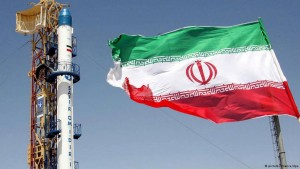
According to Iranian and Azerbaijani press reports, Iran has signed a contract with a Russian satellite manufacturer to build a high-resolution National Remote Sensing Satellite.
Iranian Communications and Information Technology Minister, Mahmoud Vaezi, told Mehr News Agency that the Iranian space programme is being developed along two parallel tracks with the National Remote Sensing (NRSS) and the National Communication Satellites (NCS) to be built and launched by foreign contractors and governments, while indigenous Iranian expertise and capacity building is achieved by building small satellites in Iran.
“[W]e have held talks with universities for the construction of communications as well as remote sensing satellites in Iran, and a number of samples have already been constructed,” said Vaezi, speaking to the Mehr News Agency.
The biggest priority for the Iranian space programme is the construction and launch of the NRSS and the NCS, and, “at the moment, the final agreement for the construction and launch of the National Remote Sensing Satellite has been signed by the Russian satellite manufacturers,” added Vaezi.
Neither the Iranian government or the media have named the Russian satellite manufacture (or manufacturers) in question, but in March 2016 it was reported by SpaceWatch Middle East that Russian satellite manufacturer Space Monitoring Systems, Information and Control and Electromechanical Complexes (VNIIEM) was in talks with Iran to build a variant of the Kanopus-V remote sensing satellite for Tehran.
The Kanopus-V was originally designed to provide real-time, high-resolution imagery to monitor natural and man-made disasters as well as other contingencies. Kanopus-V has a panchromatic resolution of 2.1 meters with a 20-kilometer swath, and a multispectral resolution of 10.5 meters with a 41km swath. An Iranian version of the Kanopus-V satellite would be launched into a sun-synchronous orbit at an altitude of 510-540 kilometers. The satellite will likely weigh about 400 kilograms with a payload capacity for cameras of 110kg. Kanopus-V has a power capacity of 300 Watts, and can store up to 24 Gigabytes of data in its internal memory and can transmit its imagery to Earth on 8,048–8,381.5 Mega-Hertz at speeds of 122.88-61.4 Megabytes per second. Lastly, the Kanopus-V satellite has an average operational lifetime of five years.
As soon as the identity of the Russian manufacturer(s) Iran claims to have a contract with are identified, SpaceWatch Middle East will update its readers.
Original published at: http://spacewatchme.com/2016/10/iran-taps-russian-company-build-remote-sensing-satellite/
 SpaceWatch.Global An independent perspective on space
SpaceWatch.Global An independent perspective on space

